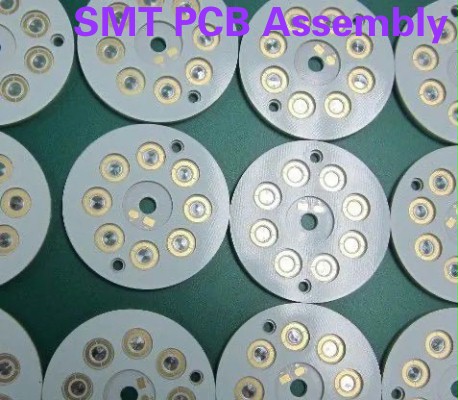How many PCB classifications are there? From material talk
From: Author:Mark Hardy Publish time:2021-10-14 15:14 Clicks:209
PCB materials, layers, and manufacturing processes are diversified to suit different electronic products and their special needs, so there are many types of PCBs.
The following is a summary of some common differences, to briefly introduce the classification of PCB and its manufacturing process. Then we will analyze it from three aspects.
1. Material
1. Organic materials:
① Phenolic resin: Phenolic resin is also called bakelite or bakelite powder. It was originally colorless or yellowish-brown and transparent. It is often sold in the market by adding colorants to red, yellow, black, green, brown, blue and other colors, and it is in the form of granules and powder.
Phenolic resin is resistant to weak acids and weak bases. It will decompose when exposed to strong acids and will corrode when exposed to strong bases. Insoluble in water, soluble in organic solvents such as acetone and alcohol. It is obtained by condensation polymerization of phenol aldehyde or its derivatives.
② Glass fiber: Glass fiber (original name in English: glass fiber) is an inorganic non-metallic material with excellent performance. It has a wide variety of advantages. It has good insulation, strong heat resistance, good corrosion resistance, and high mechanical strength, but it has disadvantages It is brittle and has poor wear resistance.

It is made of seven kinds of ores of pyrophyllite, quartz sand, limestone, dolomite, boronite, and boronite as raw materials through high-temperature melting, drawing, winding, weaving and other processes. The diameter of its monofilament is several Micron to more than twenty microns, which is equivalent to 1/20-1/5 of a hair strand, each fiber strand is composed of hundreds or even thousands of monofilaments.
Glass fiber is usually used as a reinforcing material in composite materials, electrical insulation materials and thermal insulation materials, circuit boards and other fields of the national economy.
③ Polyimide: polyimide resin referred to as PI, appearance: transparent liquid, yellow powder, brown particles, amber particles polyimide resin liquid, polyimide resin solution, polyimide resin powder, polyimide Resin pellets, polyimide resin pellets, polyimide resin pellets, thermoplastic polyimide resin solution, thermoplastic polyimide resin powder, thermosetting polyimide resin solution, thermosetting polyimide resin powder , Thermoplastic polyimide pure resin, thermosetting polyimide pure resin 2. Polyimide PI molding methods include: high temperature curing, compression molding, dipping, spraying, calendering, injection molding, extrusion, die-casting, coating Laminating, casting, lamination, foaming, transfer molding, compression molding.
And our epoxy resin and BT are all organic materials.
2. Inorganic materials:
① Aluminum substrate: The aluminum substrate is a metal-based copper clad laminate with good heat dissipation function. Generally, a single panel is composed of a three-layer structure.
They are the circuit layer (copper foil), the insulating layer and the metal base layer. Commonly found in LED lighting products. There are two sides, the white side is for soldering the LED pins, and the other side is the natural color of aluminum. Generally, the thermal conductive paste will be applied to contact with the thermal conductive part. Currently there are ceramic substrates and so on.
② Copper substrate: Copper substrate is the most expensive kind of metal substrate, and its thermal conductivity is many times better than aluminum substrate and iron substrate. It is suitable for high-frequency circuits, areas with large changes in high and low temperatures, and heat dissipation and architectural decoration of precision communication equipment. industry.
There are also ceramic substrates, etc., which are all inorganic materials, as long as they are used for heat dissipation.

